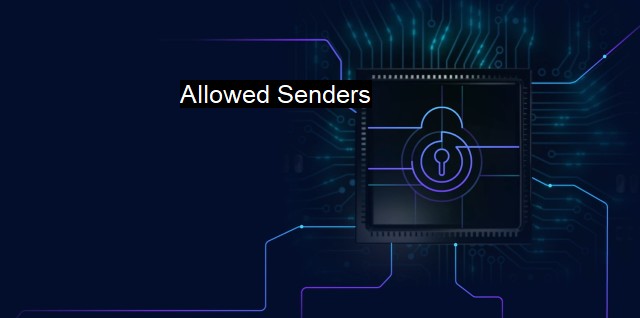What are Allowed Senders?
Understanding Allowed Senders: What They Are and Their Importance in Email Security Systems
When delving into the world of cybersecurity and antivirus, terminologies like "allowed senders" crop up frequently. allowed senders are individuals or computer systems authorized to send emails or other forms of digital correspondence, such as files, information, and communications, to a recipient. This system functions as a strategic security barrier, ensuring that unwarranted or potentially harmful content does not reach sensitive spaces within a network or individual computer setup.Allowed senders' list predominantly finds its use in inbound email security systems, which scan and filter incoming correspondences, often in the business environment utilizing enterprise email servers or generic email service providers. Herein, the allowed senders can also involve a trusted domain or a specific IP address given authorization by the receiving party.
Fully understanding the concept of allowed senders necessitates diving a little into how a regular network security model works. Networks must be protected from a myriad of threats, such as viruses, route tracing, and phishing attempts, officiated through emails and other connection-based digital correspondence. Consequently, cybersecurity models entail setting access controls, defining who gets access to which network resources, when, and under what conditions.
One critical aspect of these control measures is the allowed sender feature. The concept is comparable with traditional mail, as mail from senders we don't know or haven't authorized may contain potentially harmful content. Thus, allowed senders play a significant role in email security, with a list of such senders developed, refined, and regularly updated based on user preference and behavior.
Contrary to other defense strategies, such as firewalls and intrusion detection systems, which act as a shield to external threat actors, the allowed senders tactic is one of the few proactive mitigation strategies in cybersecurity. In this system, only the 'known' or 'safe' are allowed contact or system entry via digital communications, thus reducing the surface area for potential attacks drastically.
It is worth mentioning that alongside allowed senders, there is also a term called blocked senders. These are sources or senders deemed unsafe or unwanted and thus prevented from reaching the specified inbox or system. In some systems, blocked senders automatically proceed to a spam or junk folder, away from important or regular content.
While the allowed senders list significantly narrows down the entry points for potential online threats, it is not fully foolproof. Cybercriminals continue to devise advanced methods to trick filters and be listed as 'allowed.' They have adapted to challenging jack-in-the-box situations utilizing friendly email addresses to bypass this barrier or phishing campaigns that manipulate users to respond, opening potential gateways to attacks.
Put simply, using allowed senders lists is akin to having a bouncer for your email system, deciding who can come in, but with an added responsibility of figuring out who is pretending to be someone they're not. Therefore, while allowed senders can provide an additional layer of security to your system, it is important to understand its limitations; it serves as a handy tool but shouldn't be the only avenue utilized for maintaining cybersecurity health.
Therefore, creating, refining, and managing allowed senders is a key aspect to safeguard important information, systems, and networks. It helps form a comprehensive aversion strategy, particularly vital in this digital age where cyber threats are rampant. Effective use of allowed senders requires a multifaceted approach, involving a review of emails, analysis for bugs or threats, self-education to be a step ahead of cybercriminal methodologies, all against a backdrop of stringent cybersecurity policies and practices. This facilitates a dynamic cyber defense system that evolves with advancing technology and emerging threats.

Allowed Senders FAQs
What are allowed senders in cybersecurity and antivirus?
Allowed senders are email addresses or domains that are considered safe and trusted by the security software.How can I add an allowed sender to my antivirus program?
To add an allowed sender, you will need to access the settings of your antivirus program and look for the "Allowed Senders" section. From there, you can add the email address or domain that you want to mark as safe.Can allowed senders still send malicious content?
Yes, allowed senders can still send malicious content if their accounts have been compromised or if they are intentionally sending harmful messages. It is important to still exercise caution and use other cybersecurity measures to protect yourself.Why is it important to have an allowed sender list in cybersecurity and antivirus?
Having an allowed sender list helps to reduce the risk of false positives in spam filtering, which can lead to legitimate messages being blocked. It also adds an additional layer of protection against phishing and other malicious attacks that may come from unknown senders.| | A | | | B | | | C | | | D | | | E | | | F | | | G | | | H | | | I | | | J | | | K | | | L | | | M | |
| | N | | | O | | | P | | | Q | | | R | | | S | | | T | | | U | | | V | | | W | | | X | | | Y | | | Z | |
| | 1 | | | 2 | | | 3 | | | 4 | | | 7 | | | 8 | | |||||||